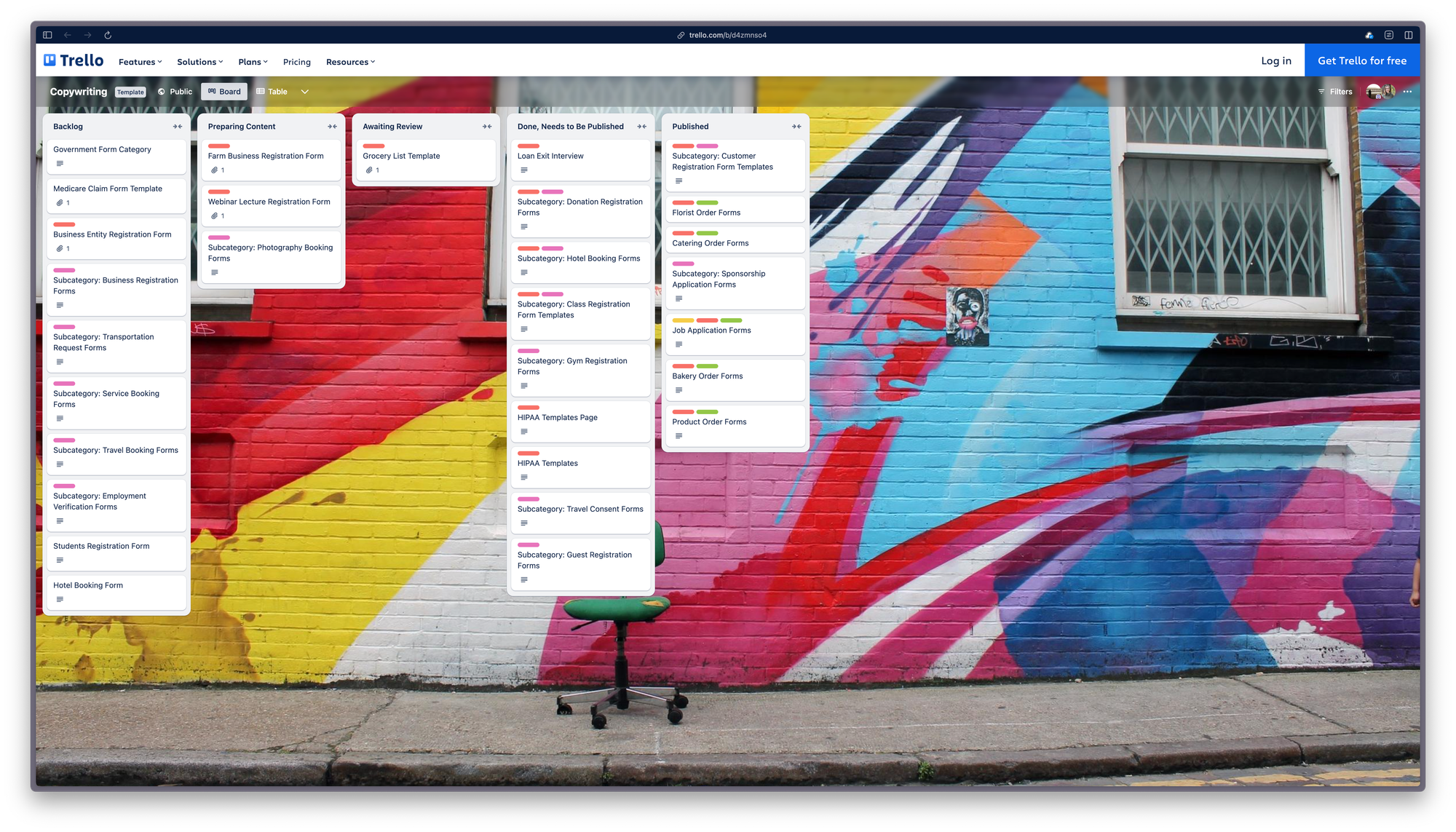Say what you mean
Accessible text, actionable language, Monzo's writing principles, a Trello template for planning content and a handy copy and paste tool.

It's time for this year's final edition of the Plain English Weekly newsletter, which very much continues to be whisked your way by me, Iain Broome.
I have nothing deep and meaningful to say, apart from thanks for reading and clicking the links over the last 12 months. I've certainly perked up over the last part of 2024 and got back into a regular publishing schedule.
That's partly because there are so many of you subscribed (900+ people) and reading regularly now (60% open rate). But also because it genuinely warms my cockles to know that other people share my enthusiasm for plain English, clear language or whatever else you want to call it.
I do have plans to expand the website in 2025 and try new stuff. But for now, enjoy the links below and have your very best holiday period ever.
One thousand festive high fives,
Iain
Don't forget, you can search and get thoroughly lost in our very own directory of bookmarks. All tagged and placed in sensible topics, you can find every link I've ever shared in the newsletter (and more!).
A beginner's guide to accessible text
This is one of many useful articles I just discovered on the Pope Tech blog:
Visual users consume most web content by reading text. Poorly formatted text can make it hard for anyone, but especially users with a visual or cognitive disability, to read and understand the content.
You might think some of the information is pretty basic, but I'll bet you've found yourself in heated chit chats with people (probably senior people) on these topics before. So this is a good place to send them to when the time comes round again.
This page on actionable language comes to you your straight from Shopify's content guidelines. One of the principles of clear language is to give instructions. To be clear and say what you mean. To help people do what they need to do. This page is full of examples that show you how to do just that.
Monzo tone of voice and writing principles
You might have seen Monzo's writing principles before, but I quite like them because they show it's possible to be clear and have a strong tone of voice. They also effectively a list of plain English principles if you read closely.

Trello template for planning your content project
I still use Trello to organise projects and content and whatever else I happen to be working on. It's more bloated than it needs to be, but it does still do the things that you need to organise your bits and bobs. This template is very similar to the one I tend to use and is pretty good for getting started.
Pastebot – a super copy and paste tool
Do you do a lot of copy and pasting? Have you ever used a clipboard manager before? Well, I am here to tell you that your life is about to be changed. Pastebot is my app of choice and I use it constantly.
It does a few things, but the most important is it remembers more than one thing you copied, including images and any formatting if you want it.
Here is the guff:
If copy and paste is a part of your workflow, Pastebot is an indispensable tool to improve your productivity. Quickly recall clippings that you have copied before and apply powerful text filters to format before pasting. Queue up multiple clippings to paste in sequence. Pastebot is always running and only a keyboard shortcut away to command copy & paste.
And if you do not use a Mac, Zapier has a list of what it reckons to be the 5 best clipboard managers in 2024, which covers various platforms.
"There’s a funny thing that happens to our writing when we're giving bad news, or talking about processes. We slip into what’s called the ‘passive' voice, which basically means we don’t say who’s responsible for something. We use the passive voice partly because we're unconsciously distancing ourselves from the message. But that's not fair for the reader, and what they need always comes first."
Monzo's writing principles
New reader?
Join a growing community of 900+ plain language champs and start getting advice and resources that help you write clearer, more accessible content.